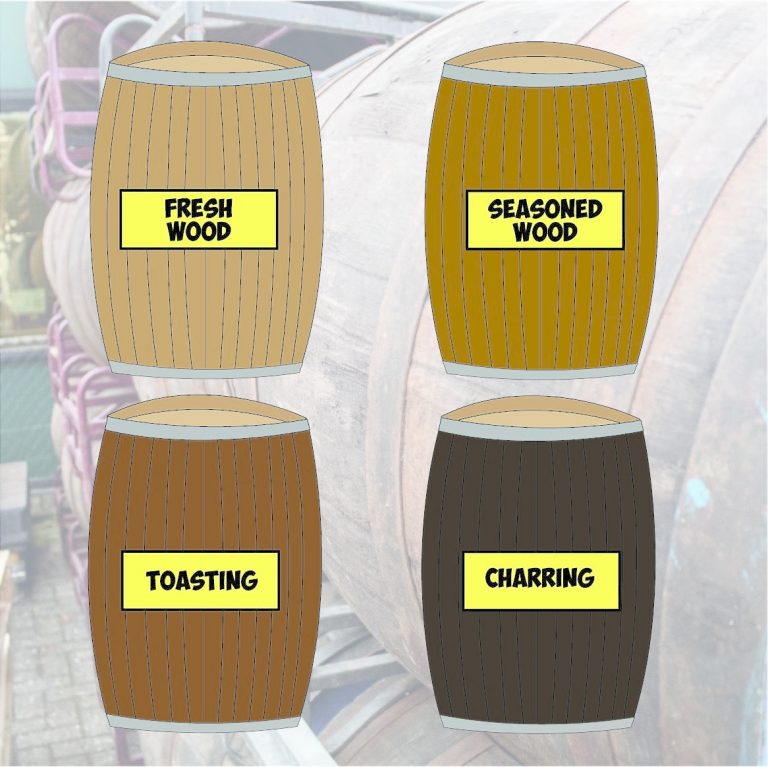So aside from brewing the freshest IPAs in the Netherlands, some of you will know that we’ve also done some barrel ageing on the side. We’ve used a variety of different barrels that have been previously used to store and age whisky, sherry, red wine, amongst other things. The barrels have imparted flavours of the wood and consequently absorbed these flavours of the liquid, which are then imparted into the beer that we age in them. This week’s blog is however going to take a ‘step back’. Barrels have been used for hundreds of years as a way of storing and moving tipples around the world. Today we’re going to focus on the actual barrels themselves and the importance of the wood from which they’re made of.
Back to the source
Beginning with the origin of the wood is key. Oak is the most commonly used type of wood used for making barrels. Oak from different varieties and different countries results in not only different properties of the wood, but because of this, can also create different flavour profiles. For instance, in the US and Canada, white oak is used to make barrels whereas here in Europe, we use predominantly French oak which creates subtle flavours of vanilla and apricots. English oak is also used, though less popular, and this contains more tannins and spicier compounds. Different types of oak can also be used to make one barrel which will result in different flavour profiles. During my research I came across a company that was offering barrels that were made of upto 5 different oaks- this must no doubt lead to some interesting flavours!
Toasted or charred?
Once the type of oak has been selected, a ‘Cooper’ (the name given to someone who makes wooden barrels) will begin the business of assembling the barrel. Once put together, a barrel needs time to be ‘seasoned’ during which the oak can be allowed to mellow out. And once seasoned, the barrel is ready to be toasted which also allows the planks to be bent into the shape of a barrel. During this process the Cooper can control the extent to which the barrel is toasted. If the barrel is lightly toasted it results in a moderate colour change but will lead to flavours of vanilla and caramel. More toasting – not surprisingly – leads to the wood becoming darker in colour but also leads to more intense flavours such as roasted nuts, coffee or even charcoal when it is heavily toasted. It should be noted that barrels can also be charred, and this differs from toasting. Charring (the word itself I think is a give away!) a barrel means that the inside of the barrel is burnt even more than when it is toasted – the wood looks black – which will consequently not only impart darker colours to whatever is put inside but also create smoky and even spicier flavours. Charring is more common for barrels that will be used for ageing spirits such as whisky rather than wines.
Hopefully the above has been a nice little introduction into the world of barrels and how the very material of which they’re made of has such an impact on the beer (or other beverage!) that is aged within. At a later date we will delve into how barrels that have been previously filled with other beverages can lead to wonderful ‘infusions’ with beer.
